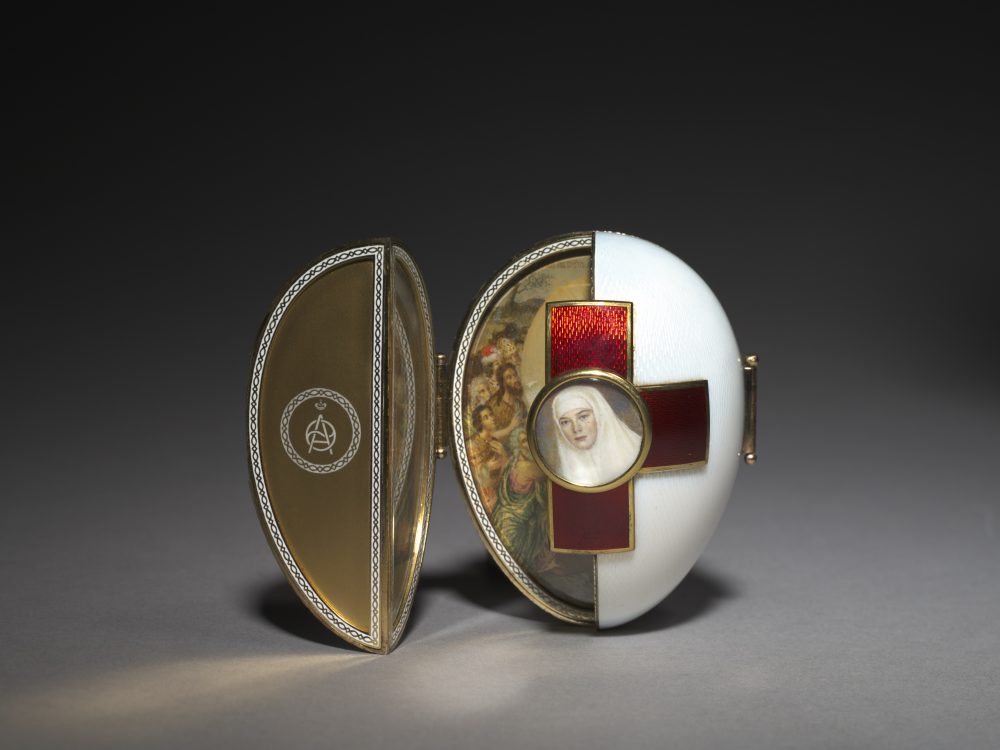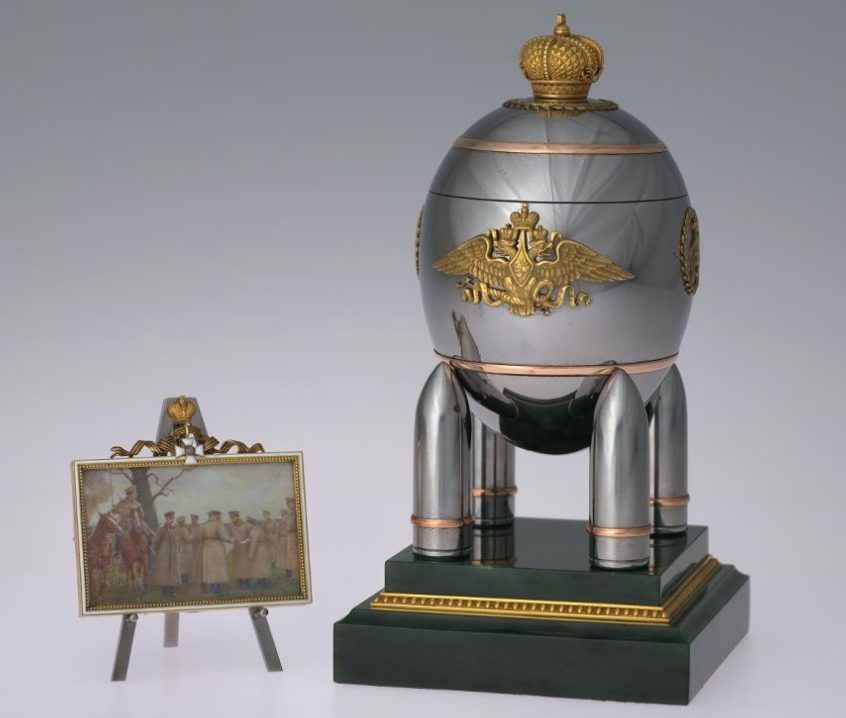Called Imperial Fabergé Eggs, they were created specifically for the Russian Tsars Alexander III and Nicholas II to present as Easter gifts to their wives and mothers by the famous jewellers, the House of Fabergé in St. Petersburg, Russia.
The first Imperial Fabergé egg that began the annual family tradition was almost humble – for lack of a better word – compared to its later counterparts. Crafted in 1885 for Tsar Alexander III to gift to his wife Empress Maria Fyodorovna, the ‘Jewelled Hen Egg’ was 2.5 inches tall, with a white enamelled ‘shell’ and yellow-gold ‘yolk’ complete with a gold hen. The eggs went on to become more extravagant using materials such as gold, pearls and precious stones. It was not until the First World War that the eggs reverted to simpler designs to reflect the austere mood of the time – in part due to shortage of resources but also as the imperial family could not be seen to be commissioning such frivolous and expensive gifts at a time when all of Russia was drowning in war.
The two Fabergé eggs on display in our exhibition, The Last Tsar: Blood and Revolution, date from the First World War and both speak to this historical context in their own way.
Imperial Red Cross Easter Egg, 1915

The Imperial Red Cross Easter Egg was made in 1915 to honour the contributions of Tsarina Alexandra and her two eldest daughters, Olga and Tatiana, in the war effort as Red Cross Sisters of Mercy. It is made of silver and gold, white and red enamel with watercolour on gold and glass and is almost 3.4 inches tall.
The front of the egg divides into two quarters, revealing an intricate triptych within. The central scene depicts the Harrowing of Hell, the Orthodox representation of the Resurrection, while the two outer scenes contain miniatures of the patron saints of the Tsarina’s daughters – St Olga, the founder of Christianity in Russia, and the martyr saint Tatiana.
The Tsarina and her two eldest daughters volunteered with the Red Cross during the First World and were trained in nursing at the Tsarskoe Selo Hospital by a pioneering woman surgeon, Princess Vera Gedroits. They broke royal tradition at the time with their hands-on approach to work at the hospital, attending to the wounded and even assisting with surgeries.
Steel Military Fabergé Easter Egg, 1916

While the Red Cross Egg speaks to the Imperial women’s efforts on the home front, the Steel Military Easter Egg recognises the Tsar’s work at the General Military Headquarters and his role as Commander-in-Chief of the Russian army. The egg stands at 4 inches with the miniature painting hidden inside.
The Steel Military Easter Egg was the last of the fifty Imperial Fabergé Easter eggs to be completed and was presented as a gift from Tsar Nicholas II to his wife Tsarina Alexandra in 1916. Just a year later, the Tsar would abdicate, and the family would become prisoners of the provisional government.
The egg was designed during the war by one of Carl Fabergé’s relatives, and was manufactured at the Putilovskii Steel Plant which was well-known for the quality of its steel. This Easter Egg is unusual for not being as lavishly embellished a some of its counterparts – during the turmoil of the war, limitations to resources meant that jewellers were no longer using silver and gold.
Made after Tsar Nicholas II had taken personal charge of the Russian army in 1915, the egg contains a miniature painting of the Tsar and his son Alexei reading maps at the war front – intended to represent the Tsar as a great military leader to be succeeded by his son Alexei in the future. It sits on four legs made to represent artillery shells, one of the newest weapons of the time. Almost foreboding of the fate of Russia and the imperial family, the steel of the ‘shell’ was originally black, but began to rust shortly after it had been delivered to the Tsarina. It now appears silver after being polished to prevent it from deteriorating.
This blog was written alongside our free exhibition The Last Tsar: Blood and Revolution, exploring the life and death of Tsar Nicholas II and his family and the forensic investigation into their murder. Discover more about the science behind one of the greatest mysteries of the 20th century in this series of blog posts.